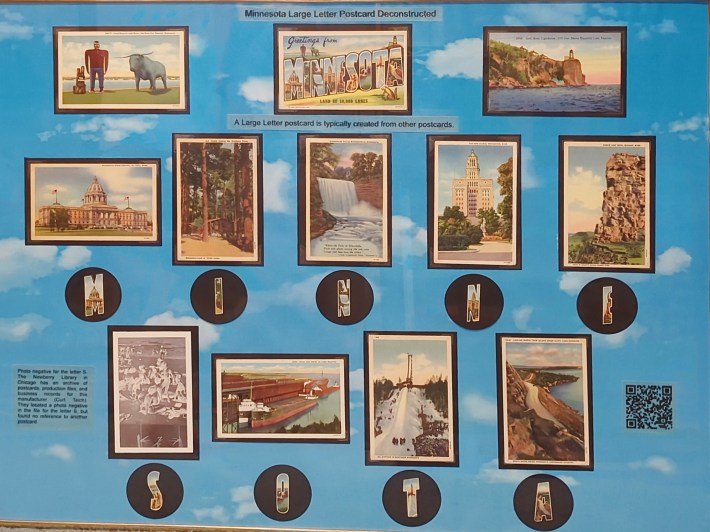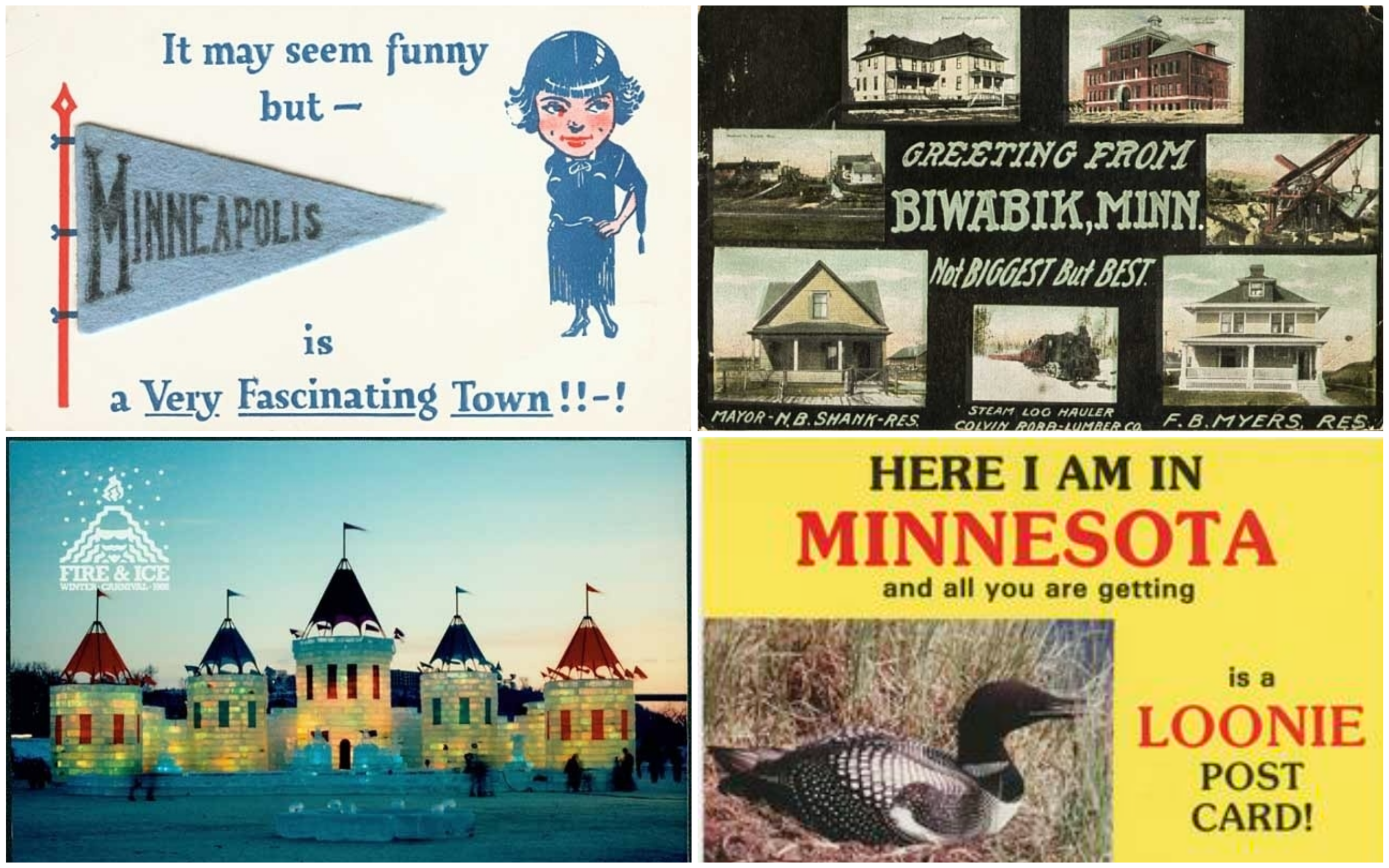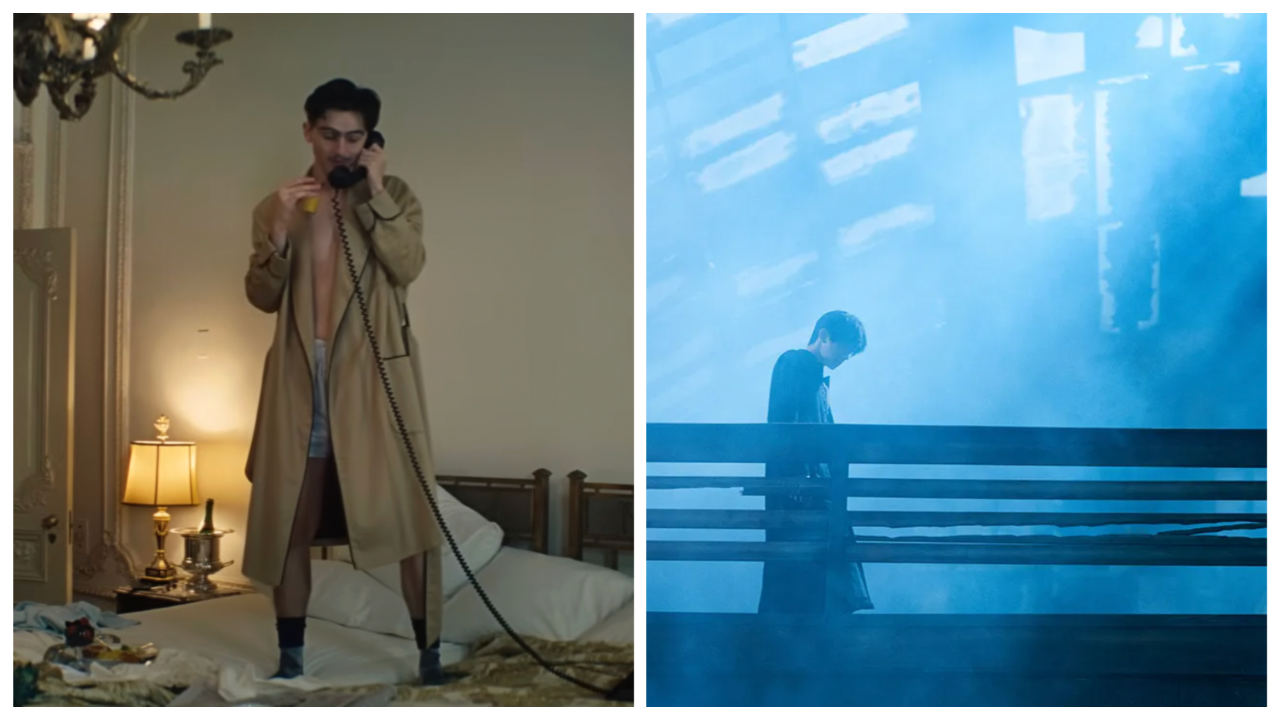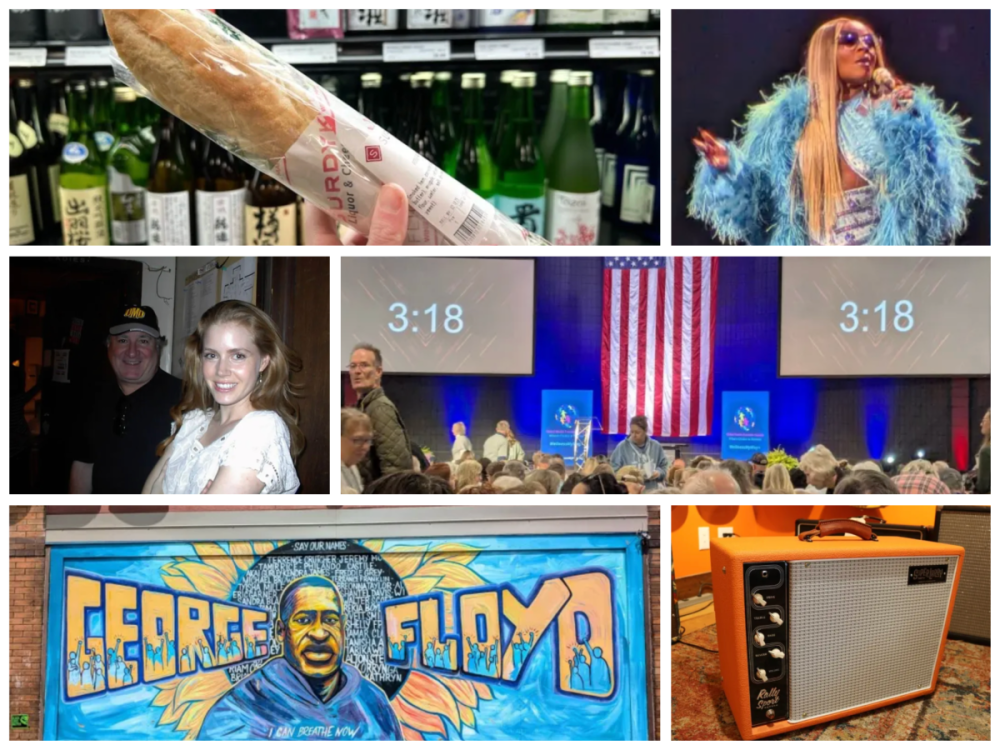What is the formal name for postcard collectors?
Deltiologists.
What is deltiologists’ name for themselves?
“Dorks,” according to Allen Cottrell, a postcard dealer and collector.
“We all have that curiosity, that willingness to talk about anything,” he elaborates.
That curiosity combines with passion, and leads to events like the 2025 Land of Lakes Paper & Postcard Show, held this Friday and Saturday at the Crystal Community Center. The event was started by Mary L. Martin, a postcard dealer based in Maryland, and is co-sponsored by the Twin City Postcard Club. “We run shows all over the United States, and this is the second-biggest show in the country,” she says.
There will be 40-some vendors, selling antique maps, menus, and other paper collectibles, but it is predominantly a vintage postcard show. “There are no limits to what you should collect or could collect. It’s as wide open as your imagination,” says Fred Schiffman, who has bought and sold postcards in the Twin Cities for over 50 years, and since 1987 has judged postcard displays at the Minnesota State Fair.
Schiffman started out as a stamp collector. When someone showed him a postcard of Schiffman’s Fountain in Como Park, however, he had a new hobby. While he has no relation to the fountain’s namesake, the name was enough to get him hunting for as many Schiffman’s Fountain cards as he could find.
Brad Parks has collected postcards for around six years. He began by acquiring ones of different places he’s visited, mostly small towns around Minnesota, and has since built up a big pile from his hometown of Ortonville, Minnesota. Like many collectors, after he caught the bug he starting exploring new types of postcards. His main prey these days? Large letter postcards, the classic postcards that say something like “Greetings from Minnesota” with Minnesota printed in, expectedly, large letters.
And Parks keeps digging deeper. He found all the postcards whose images were used to fill each of the large composite letters on a Minnesota postcard, and turned it into one of his ribbon-winning displays at the State Fair.

When I visited a Twin City Postcard Club show at the Hopkins VFW last fall, I found postcards for a whole bunch of things I like, including Wayne’s World, the Metrodome, A River Runs Through It, the Minneapolis Institute of Art, and, remarkably, my family’s old business. You can find postcards of random motels you stayed in and restaurants you ate at. You can even find nude photographs.
“All you have to say is, ‘What do you collect?’” Cottrell explains. “Then just sit down and listen, because they’re gonna tell you, and it’s going to take a while. Every answer is different, and it’s awesome, and usually very surprising.”
Cottrell recalls one answer he overheard at the country’s largest postcard show, in York, Pennsylvania: “There’s a woman that comes to the table and she says, ‘Do you have cows standing in water?’ And then she adds, almost for effect, ‘from behind.’”
And collectors consider more than just the topics of the postcards. There’s the question of used versus unused. Some people prefer a mint condition postcard, while others want the added history that comes with a mailed one.
Schiffman points to the 1904 World’s Fair. “It’s much neater to have one that’s mailed from the Fair by somebody who’s at the Fair,” he believes. Some cards even have a postal cancellation from the Inside Inn, the hotel that was built inside the World’s Fair grounds.
A subset of collectors go even deeper, collecting cards not based on the front image, but based on the postmarks for the specific rail lines they were carried on.
Image-wise, there are the large letters that Parks collects. Those came into vogue at the same time as classic linen postcards, the ones you probably think of when you think of old-school postcards—a picture of a landmark but with exaggerated colors so they look almost hand-painted. And then there are more recent photochrome cards, that still get made today, with real photographs, accurately colored, printed on glossy stock.
In the early 1900s there were real photo postcards. As their name says, they were photographs printed, in standard fashion, onto postcards. Photographers would travel around with a camera and sell cards to local residents and businesses. Collectors love these, because, on top of their age, many are one-of-a-kind or very-few-of-a-kind cards. They are the postcards that, on average, are going to sell for the most money. Today they can cost hundreds of dollars.
There are also artist-designed postcards. These can be rare, and can carry prestige in the same way that any art would. Martin says she once sold an artist card for $14,000. Generally speaking, though, postcard collecting is a cheap hobby. At that show last fall, I bought multiple recent photochrome cards for a quarter each, some linens and older photochromes in the $1 to $5 range, and splurged on a real photo for $10.
Parks’s first postcard show was a Land of Lakes show. “There were just hundreds of thousands of postcards. Millions? I don’t know. It was more postcards than I’ve ever seen in one place," he remembers. (Martin confirms there were between 1 to 2 million.)
“Everybody has their own way of doing it,” Cottrell says of how dealers build up their huge inventories. The common move is to find people offloading their large personal postcard collections. Cottrell also looks for “mistakes.” Which, he says, “might not be mistakes to that person.”
One dealer may discover, for example, that audiences simply aren’t interested in postcards featuring cows standing in water, viewed from behind. But Cottrell knows where he can sell those. So if he sees a 50-cent bovine backside in Crystal, maybe he can resell it for $10 in York. Which is the core of Cottrell’s favorite joke about postcard dealers. “If you had 10 postcard dealers stranded on a desert island with one box of postcards, within an hour they’d all be making a great living," he chuckles.
The postcard-collecting community is all too aware that passion around their favorite pursuit appears to be waning. “I hate to say it,” Schiffman says, “but it’s kind of a diminishing hobby because of the age. The average collector is probably 65, 70 years old.”
It's no secret that email has more or less replaced snail mail; letter mail (postcards, letters, bills) declined by 50% between 2014 and 2024. And the status that postcards used to provide—showing off where you’ve been, and sharing that experience with friends and family—has been replaced by social media.
But the collectors have some hope. Parks likes postcards because he doesn’t “have the time machine working yet.” Postcards give him a perspective on how places change over the years. Others, especially the more the daily news stresses them out, will always be interested in the healthy escapism that postcards can provide.
Cottrell points out that things like Instagram are replacing postcards because they’re built on the same foundation of “strong images.” But the internet can’t replace the physical nature of postcards. You can give someone a cool vintage postcard as a gift. You can’t give them an Instagram post to hold and cherish.
Most of all, though, postcards might be safe because dorks won’t be going away anytime soon.
Land of Lakes Vintage Paper & Postcard Show
When: 11 a.m. to 6 p.m. Friday & Saturday
Where: Crystal Community Center, 4800 Douglas Dr. N., Crystal
Tickets: $5 for both days; find more info here







